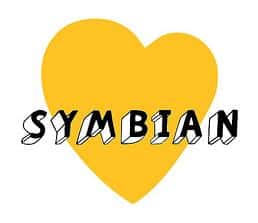
Handset makers other than Nokia (NYSE: NOK) may be deserting Symbian and Nokia’s recently-renewed commitment to the mobile OS may turn out to be a last dice throw – but, hey, at least The Symbian Foundation has now found a €22 ($30.84/£19.25) million injection from a European taxpayer programme…
A European Commission-sponsored programme called the Artemis Joint Technology Initiative is giving over the money to a spin-off group the foundation has created, because it “identified Symbian as a unique technology that is a vital focus for European-centric mobile software development“, according to the foundation’s technology manager.
To get the money, the foundation formed an industry consortium, aiming “to preserve Symbian’s position as the world leader in Operating Systems software development and set it on an industry-changing path to make it the focus for future European mobile technological development”.
It called the consortium SYMBEOSE (“Symbian – the Embedded Operating System for Europe”), which took its begging bowl to Artemis in September with this proposal that argued “20,000 jobs in Europe depend on Symbian” and that it would “combat mobile device and service homogeneity exemplified by Android and iOS“.
SYMBEOSE claims as members “24 major European technology organisations from eight European countries, comprising major mobile device manufacturers, hardware and service integration professional services, major consumer electronics companies, mobile network operators, application developers, universities and research institutions”. None were listed in the announcement today, though Nokia is one; Symbian says SYMBEOSE will “instigate a series of state-of-the-art development projects that will create new opportunities for Symbian’s global stakeholders”.
Although SYMBEOSE seems keen on investigating the future for Symbian on embedded devices and “new types of hardware”, the programme will also develop “new core platform capabilities” for Symbian.
All this is a very handy way for The Symbian Foundation to find an alternative funding stream, should its Nokia dependency go tits-up. SYMBEOSE is effectively an EC-sponsored guarantee that Symbian could end up on non-mobile devices if Nokia pulls the plug. The foundation itself is also getting €2.9 ($4.07/£2.54) million.
Nokia had spun away its core OS in to an independent developer community while it also explored the development of a new, higher-end OS, MeeGo. Symbian^3 is not the revelation Nokia had proclaimed, and now Nokia finds itself with an uneasy commitment to each OS.
Nokia has done plenty to satisfy Symbian developers in recent months, including making the “signing” of apps free and introducing in-app purchasing and ads.
New CEO Stephen Elop last month announced a harder focus on the underlying Qt platform and a new commitment to HTML5 technologies that will mean developers can write once for both Symbian and MeeGo.
Artemis is a 10-year, €2.5 ($3.5/£2.19) billion fund “co-funded by industry, research organisations, participating Member States and the Commission’s own ICT programme”, according to its website.
Of the €22 ($30.84/£19.25) million, SYMBEOSE is getting €9.8 ($13.74/£8.57) million from member states’ public funding; it had sought €11.3 ($15.84/£9.89) million, says Artemis’ award confirmation.
The biggest national contributors to SYMBEOSE’s award are Finland with €1.6 ($2.24/£1.4) million and the UK with €1.1 ($1.54/£0.96) million.
The European Commission has a strong current interest in defining the underlying technologies of the coming wave of “the internet of things”.
Update Symbian sent a PR to clarify what Symbian’s blogger didn’t explain…
I just wanted to get in touch about your recent story about Symbian and the new SYMBEOSE initiative, as there are a couple of factual inaccuracies that I thought you would want flagged.
“It’s not a €22m investment from the EC. The EC, under the Artemis Joint Technology Initiative, has granted €11 million and has been matched by funding provided by the organisations in the consortium. This is where the €22 million figure comes from.”